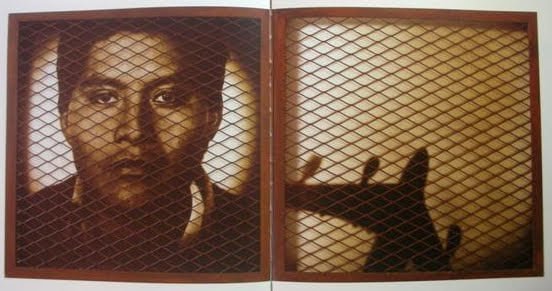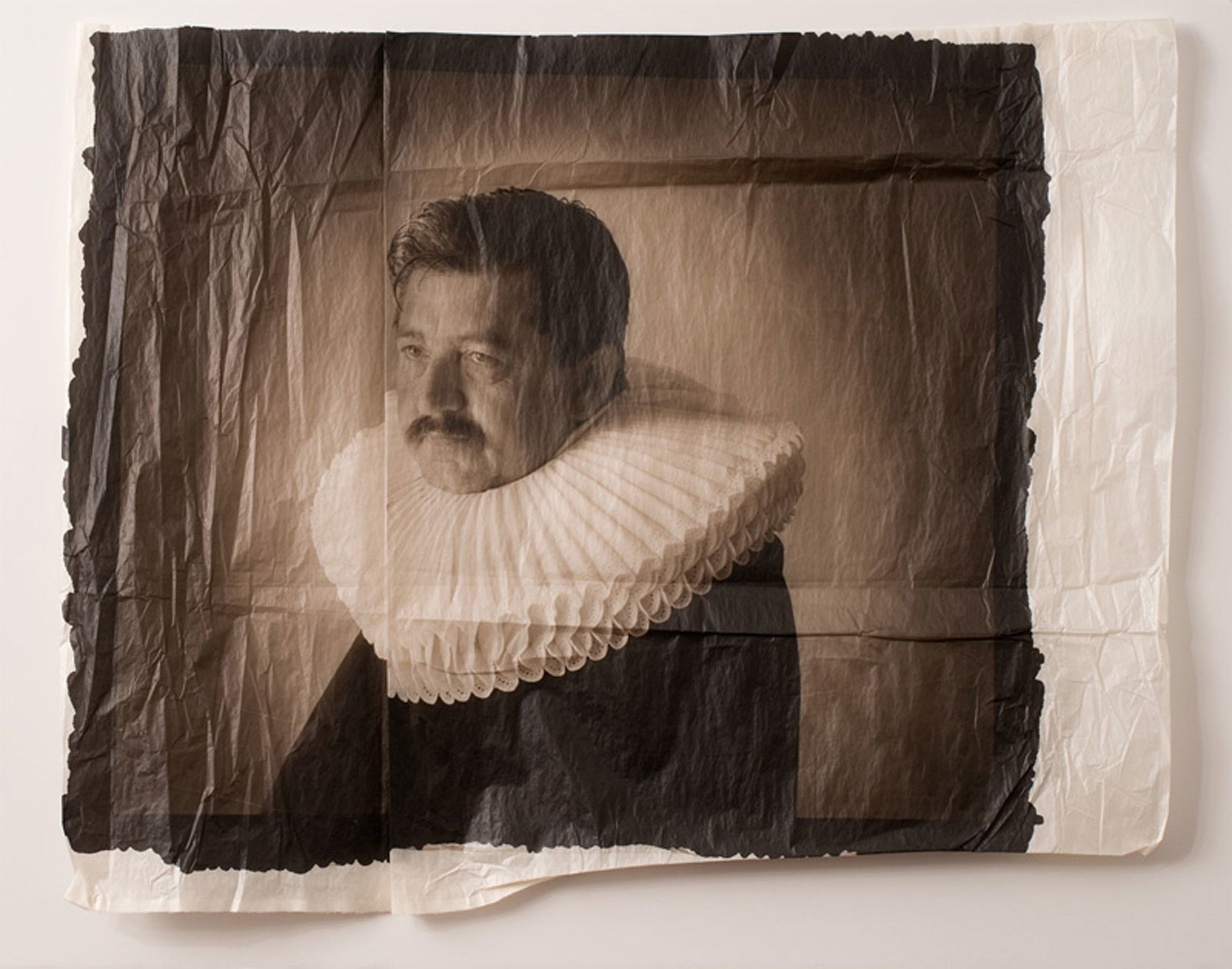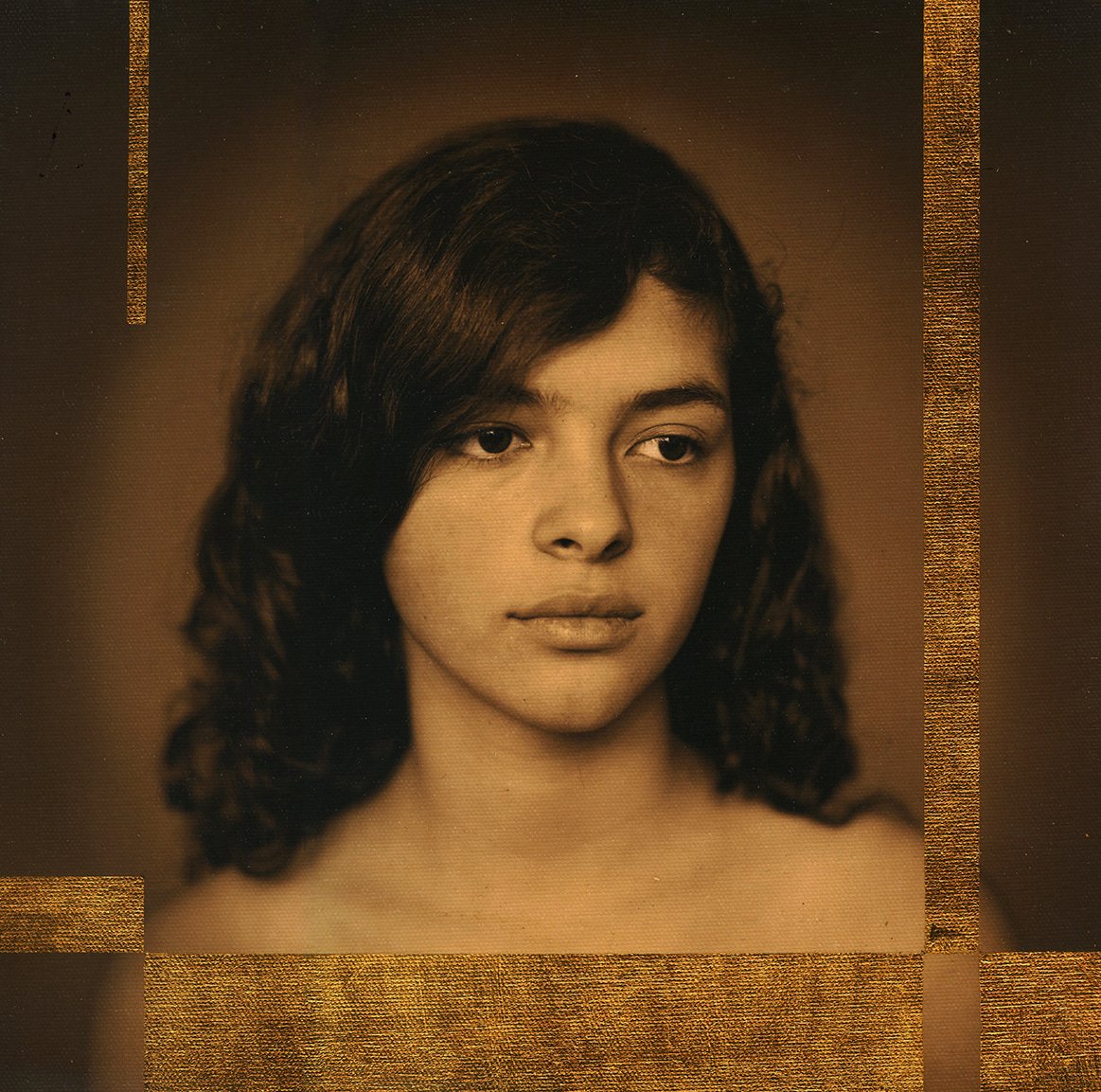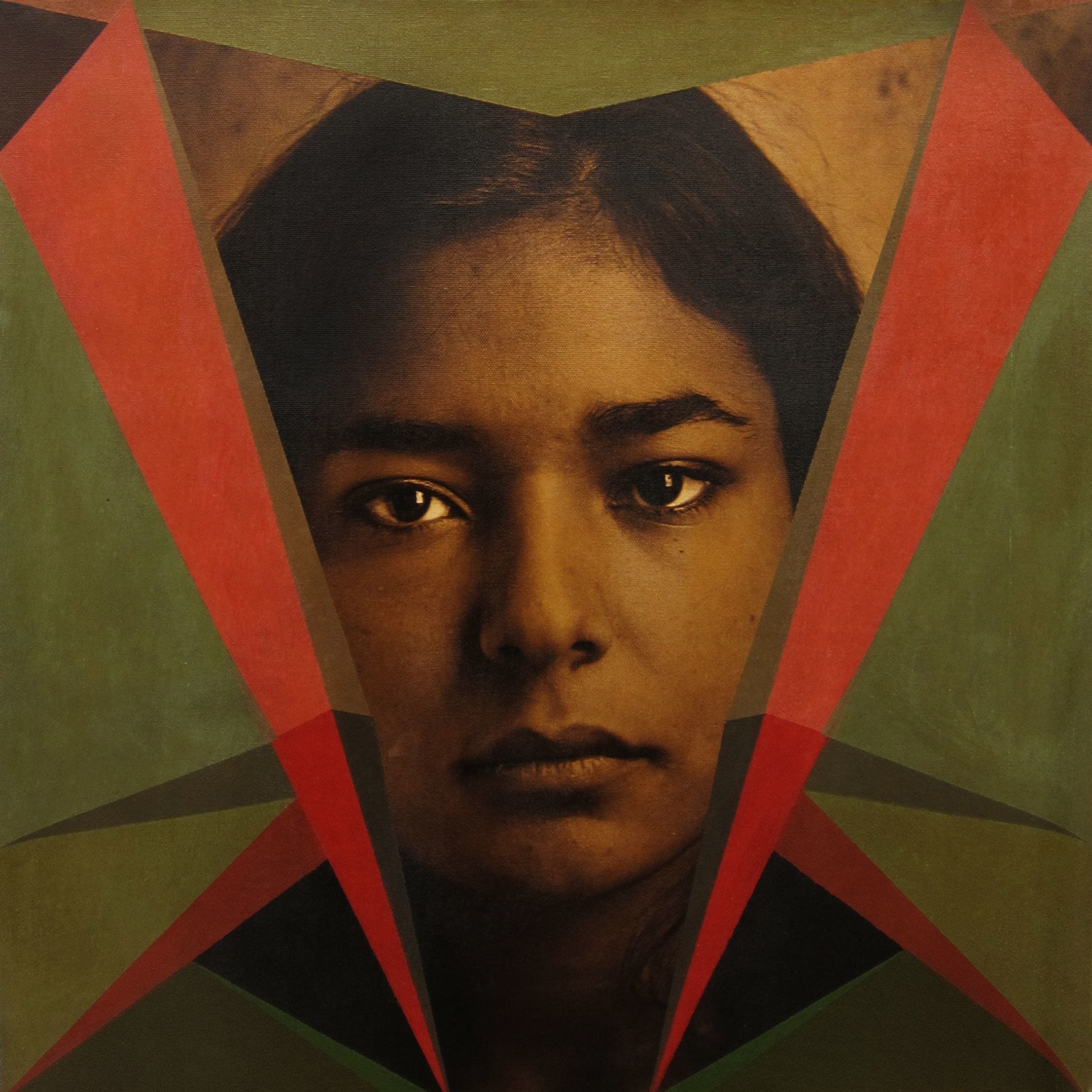The invention of myth is an online survey of available works drawn from the established 35 year career of Luis González Palma. The exhibition also celebrates the gallery’s role as primary US dealer. The contemporary Latin American Artist was first recognized for his early work in photography. His practice often relies on photo/lens-based processes, but is far more diverse than its frame. His early works, now referred to as Series or Obras (1989 – 2012), addressed the difficult past of his birth country, Guatemala, particularly the plight of the Mayan people. He engaged histories from colonization to the disappeared via intimate portraits using the gaze, symbolism, and the qualities of chosen materials to drive meaning. Subsequent decades retain interest in the base of these subjects, signifiers, and tone, but expand into new territory-method, approach, scope.
Artworks here selected were made between 1989 - 2021. The set samples from major movements and materials/processes, but do not exhaust them. This online exhibition underscores an arch of work while signaling ongoing intention and new directions. Each artwork embodies outstanding qualities. With retrospect, we can say these artworks proof evolution. Each is an anchor point in a career that has reached full stride.
La Invencion del mito | The invention of myth, 1998
For González Palma, art/objects are more sacred than precious. Through the years González Palma’s works have incorporated reductive and additive methods. He has been known to tear, fold, scratch, and even destroy his work to create something new from its remains. Many images are “imperfect,” fugitive, or especially fragile by design. The work has a life of its own.
The wash he uses to “hand paint” his photographs became signature, and has been much addressed in the past. From here, photo-collage was the first of many hybridized experiments. González Palma first integrated the intimate portraits of Guatemalans with original documents (missing person’s notice, death certificates, book pages, sheet music), acrylic paint, red thread, ribbon or embroidery. Many of these materials, references, or interests recur. Later, he developed a technique whereby translucent kodalith and gold leaf are embedded in resin. He has experimented with prints on fabric from silk to felt as well as embroidery. He has encased images in resin. He has juxtaposed with “acrylics” from paints to thick sculptural panels. Interest in installation and sculpture recur. More recently, he has employed traditional to new media techniques from drawing to video (related: Los Huesos del Agua | The Bones of Water). Through his practice González Palma pushes the boundaries of subject and material, personal and universal. This union and conflict also lend meaning and context to his work through time. Meaning builds upon meaning. Following this line, the work has become increasingly experimental, even philosophical with time.
El Goce de lo no dicho | The pleasure of what is not said, 2004
For over a decade (cir. 2000 – 2015) González Palma (now living in Argentina) became known for embedding images in resin. He worked with gold (or silver) leaf on red paper and images in kodalith, then embedded these two layers in resin. The graphic black and clear kodalith lays over a gleaming but imperfect grid of gold (or silver) leaf. The red under-layer of the red paper bleeding through spaces and cracks, disturbing and enhancing the emotion and tenor of the work. This treatment, like the work of Obras, references a wealth of loaded, even dual cultural and natural cues. Gold leaf over red backing is a nod to classic treatments of the material in such elevated (architectural) spaces as domed cathedrals or lavish estates. The encapsulation of these layers into resin establishes a sense of preservation and protection. The element of a red body (thread, string, ribbon, paper, acrylic) itself is invested, running through González Palma’s works, like a bloodline, it too provides structure and symbolism.
Estudio de la Annunciation de Murillo | Study of the Annunciation of Murillo, 2006 (triptych)
Luz de la mente: 1624 (Reni) | Light of the mind 1624 (Reni), 2005
From the year 2000 onward, González Palma continued to negotiate ideas that study the nature of humanity and personal existence. Again, the personal and the universal themes become essential to what the Artist describes as “the annunciations of life.” Some of the artist’s critical interests were his becoming a couple and a father, religious paintings, absent interiors, and-the ever enduring intimate portraits.
Two bodies of work, 2005 Luz de la Mente | Light of the Mind and 2006 Jerarquías de Intimidad, La Annuncicacíon Cultural | Hierarchies of Intimacy, The Cultural Annunciation, drew from religious paintings. The former project recreated the loin cloths of Christ and the latter references hand gestures from annunciation-theme paintings. Both series drew inspiration from works by such masters as Murillo, Rubens, Reni, Botecelli, Reni, El Greco, and Zuberan. Replicas of the loincloths in the paintings were sculpted in air. Fabric hangs body-less suspended by visible apertures. The hands explore a “corporal/emotional language.” The sign language depicted is neither universal, nor capable of being described by particular language.
Jeraquias de intimidad: Variation 2 | Hierarchies of intimacy: Variation 2, 2007
A pronounced subject over time is presence in absence; this was depicted in an arch of works, from early portrait-driven Obras through even current works. We might argue it is most pronounced in 2005 Jerarquías de Intimidad, El Duelo | Hierarchies of Intimacy, the Duel and in 2004 Jeraquías de Intimidad, El Encuentro | Hierarchies of Intimacy, the Meeting. While the series have some portraits, they lean towards the surreal- images of furniture arranged in gilded yet crumbling architectural spaces. The furniture and architecture have unusual contexts that carry personal, but trigger our own inter narratives. Chairs have thorns, stand on daggers, have cut legs or are entertwined. They are positioned in the landscape or in unusual, non-functional ways. These may be harmonizing answers to the early portrait works and acknowledge the absent body. Personal and “anonymous” portraits also continue to appear in the artist’s images at this time as does furniture, which acts as stand-in for a figure. Sense of presence is proved by all these works. Even when the body is removed, the sentiment, spirit, gesture remains enough for us to sense the absent whole. Perhaps this approach lends relatability. We see interests in the uncanny, simultaneous(reality), and dramatic continue into the next chapters of work.
Jeraquias de intimidad: Variation 8 | Hierarchies of intimacy: Variation 8, 2007
Luis González Palma then brought digital photography, color, video, and sound into his practice. The work remains a study on the nature of humanity, but the locus has expanded, and become quite theoretical. In 2007 the Artist released his first color series, Jerarquias de Intimidad, La Anunciación | Hierarchies of Intimacy, the Annunciation. This work is a reflection on the subject of desire and longing. Each scene was created by the artist with his partner at the time, Graciela de Oliveira. The work seeks to expresses an instant of a dream related to an intimate world. They continued to explore gesture and interests begun in La Luz de la Mente and Jerarquías de Intimidad, La Anunciación Cultural. They are in a sense modern variations on themes that remain constant in the history of occidental art. Artworks rendered create evidence through characters, space and objects. Each picture expresses an instant of a dream related to an intimate world, at times real, at times non-real, but undoubtedly incomplete. They produce a reflection on the subject of the fragility of memory, the perturbing of desire, the loss as an emotional wound that remains with us through life, the complexity of producing meaning out of pain and loneliness.
Mobïus, 2014
In the years that followed, the artist begins a break-away from his own established methods. González Palma discontinued making his own new photographs and has chosen to re-work from archives. Sources draw from his personal image archive and also engage public archives-Astronomical Observatory of Córdoba or Regional Research in Mesoamerica (CIRMA) in Antigua, Guatemala as examples- to make new artwork. Through this method of using what exists, more collaborative approaches and direct methods of translation can be used to render the phenomenological world into a visual or audible artwork.
Mobïus, 2021
Mobïus, 2015
Möbius is a string of ongoing studies that first began in 2013 with a series that delves into other ways of creating and understanding photography. Various methods of aesthetic perception are employed to create new implications. The artist began this dialogue by juxtaposing geometric abstraction and his own early images. Known and unknown works- portraits- from the Series period onward reappear, but now incorporate white washes and/or geometric forms rendered over them in acrylic paint or gold leaf, or a mix of these. Emotional and symbolic, the new stories generated by these combinations explore the boundaries between photography and painting, emotion and reason, aesthetics and politics. Hope and irony emerge, for example, as geometric abstraction which was embraced as unifying, non-hierarchical, and idealistic form of art believed to be capable to transform the world.
Haiku 2, 2018
Haikus is a series of digital geometric drawings on fragments or residues of other images. While this work has a clear relationship with the Möbius project, it is distinct, for it establishes a dialogue between geometric abstraction and expressionist abstraction, giving rise to new images with particular geography and visual sensations.
Works made after 2021 have expanded significantly again. They are etherial, conceptual, open to internal evolution- space-distance-time. Still, the enduring theme of “the gaze” remains present. While not addressed in this review, newer and current projects will be the subject of future presentations and exhibitions. The gallery can offer works from current projects for collection. Inquiries welcome.
Mobïus, 2014
About the Artist: Luis González Palma’s (b. 1957, Guatemala) work can be found in the permanent collections of The Art Institute of Chicago, Eastman Museum, National Gallery of Art, Museum of Fine Arts, Houston, Center for Creative Photography, MoPA | San Diego Museum of Art, Museum of Contemporary Art San Diego, The Fogg Museum, The Minneapolis Institute of Art, among many other US and international public collections.
His work has exhibited across the Americas and Caribbean from Canada and the US to Argantina, Brazil, Cuba, Guatemala, Mexico, and Venezuela. In Europe it has shown in England, Italy, Netherlands and Spain.
González Palma received the Gran Premio PhotoEspaña “Baume et Mercer” in 1999 and collaborated in the staging of the opera production “The Death and the Maiden” in the Malmö Opera in Sweden in the year 2008. His work was included in international forums at the 49th and 51st Venice Biennale; XXIII Biennial in Sao Paulo, Brazil; V Biennial in Havana, Cuba.
He lives and works in Cordoba, Argentina.
























